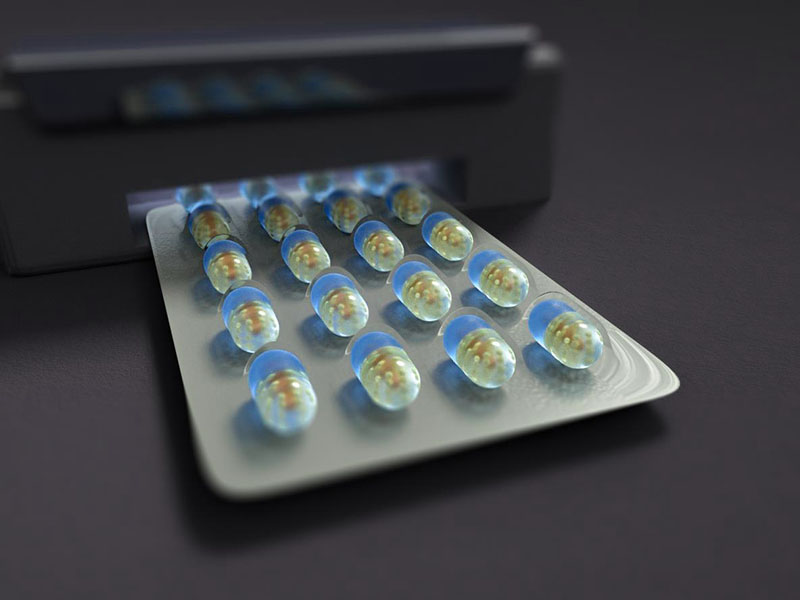It often takes a long time for a new drug to go from research and development to clinical trials to approval for marketing. In the case of Gleevec (a leukemia drug), the whole process took about 50 years. Therefore, traditional drug development and production techniques are in urgent need of change. In 2015, the world’s first 3D printed drug was approved by the US FDA (Food and Drug Administration), marking the official entry of 3D printing, an emerging technology, into the field of drug development and production. Scientists imagine that 3D printing of drugs may open up a new era of smart pharmaceuticals.
01 What Is 3D Printing Technology?
3D printing technology, also known as three-dimensional printing technology or additive manufacturing technology, is known as the iconic product of the third industrial revolution. 3D printers work basically the same as ordinary printers, but the printing materials are different – 3D printers are filled with different printing materials such as metals, ceramics, plastics, sand, etc. When the 3D printer is connected to the computer, the printed materials can be superimposed layer by layer through computer control, and finally the blueprint on the computer can be turned into a three-dimensional object.
3D printing technology is used in many fields such as aerospace, machinery manufacturing, construction engineering, pharmaceuticals and medical treatment. In the medical field, 3D printing technology has been used to manufacture human organs, medical devices, etc., and the printing of pharmaceutical preparations is of course not a problem.
02 History And Current Situation Of 3D Printing Of Drugs
The idea of 3D printing originated in the United States in the late 19th century with photosculpture and geomorphic techniques. Later, the Massachusetts Institute of Technology developed the prototype of 3D printing technology in the late 1980s, and reported in 1996 that the representative of binder injection molding technology – powder bonded 3D printing technology was first applied to pharmaceuticals. The Massachusetts Institute of Technology licensed the application of this technology in the pharmaceutical field to a company in the United States, and the company became the world’s first 3D printing drug company. Unfortunately, due to the high difficulty and long cycle of the development of this pharmaceutical technology, the company has not realized the industrialization of 3D printed drugs.
Since 2003, a 3D printing drug company in the United States has spent nearly ten years developing a new technology for large-scale 3D production of drugs based on powder bonding technology. In 2015, the company’s first drug product developed using 3D printing new pharmaceutical technology was approved by the US FDA, which marked that 3D printing as an emerging pharmaceutical technology was recognized by US regulatory agencies, and since then it has set off a worldwide trend of 3D printing drugs. boom in research.

However, there are still many difficulties and challenges for 3D printing of drugs to be truly commercialized. For example, the development and industrialization of proprietary technologies require a lot of time and funds, and more importantly, strong innovation. Therefore, although large pharmaceutical companies around the world have established 3D printing pharmaceutical R&D teams, there are currently only two companies that can apply 3D printing technology to the commercial development stage of pharmaceutical products, one of which is in China and the other is in the United States.
03 The Future Development Trend Of Drug 3D Printing
To realize the 3D printing of medicines, it is inseparable from computer models and other advanced information technology, such as big data, artificial intelligence, Internet of Things and sophisticated online physical and chemical detection technology. In addition, many production and testing links of 3D printed drugs will need to use robots to achieve “unmanned production”.
In addition to being used for drug product development and large-scale production, 3D printing technology’s flexibility in adjusting drug dosage, drug combination and production method makes it very suitable for personalized medicine. That is, 3D printing technology can customize medicines according to individual patient needs, genetic characteristics, disease state, gender and age.
After years of technology accumulation, leading companies in the field of drug 3D printing have emerged. These companies take the road of regulatory registration through 3D pharmaceutical products, which will attract more traditional pharmaceutical companies to adopt 3D printing technology. Drug 3D printing will become an important advanced technology for the development and production of solid preparations and product update iterations in the future.










